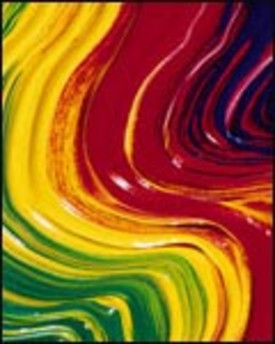Many factors determine the type of paint that you should use on any given paint job, including the nature of the surface you want to paint, its condition, age, and the type of paint previously used on the surface, if any.
Virtually all paints fall into two categories: water-based latex paints; and solvent-based paints, which are commonly referred to as oil-based paints or "alkyds." These names indicate a major difference between the two types of coatings—most of the liquid portion of latex paint is water, while the liquid in oil-based paints consists of petroleum distillates and other organic solvents.
About 75% of all the paint that is told today is of the latex variety: Do-it-yourselfers use an even higher percentage of this type of paint for both exterior and interior projects. But you should take nothing for granted when painting your home. You must consider the nature of your particular job before deciding which type of paint is best for your application.
| Performance Comparison Chart for Top-Quality Paints | |||||||||||||||||||||||||||
|
|||||||||||||||||||||||||||
Latex and oil-based paints have very different characteristics when it comes to application, durability, and cleanup. |
Characteristics of Oil-based Paints
Top-quality oil-based paints have excellent adhesion characteristics, which means they get a tight grip on the surface being painted. Good adhesion is essential for a durable paint job. However, oil-based coatings tend to oxidize and get brittle over time, which can lead to cracking in exterior applications, and yellowing and chipping in interior applications.
That said, oil-based coatings are still your best choice in two circumstances:
• when repainting exterior surfaces with heavy "chalking" (chalk is the powdery substance that comes off on your hand when you run it across the surface); and
• when repainting any exterior or interior surface that has four or more layers of old oil-based paint (the number of layers can often be determined by removing some paint chips and examining them).
There are also circumstances in which you should never apply oil-based or alkyd paints. For example, they should not be applied directly to fresh masonry, or galvanized iron. In either case, the result will probably be a very quick failure of the paint.
If you decide to use oil-based coatings, be aware that they are more difficult to apply, clean up, and dispose of than latex paints. They also take longer to dry—sometimes 24 hours or more—so you cannot apply a second coat as quickly as with latex paint. Oil-based paints can be used for certain applications within the home, particularly on interior trim. But keep in mind that these paints have noticeably more odor than latex paints. That, combined with the slow dry time, may put your rooms out of service for a short while. If you use oil-based paints, you will also have to use paint thinner to clean up drips and equipment, which means that you must use extra care in handling and disposing of rags.
Characteristics of Latex Paints
| 100% Acrylic Latex Paint: Ideal for These Surfaces |
|||||||||||||||||||||||
|
|||||||||||||||||||||||
Top-quality, 100 percent acrylic latex paints are ideal for many surface applications, including exterior surfaces. |
|||||||||||||||||||||||
Water-based latex paints have always been popular with do-it-yourselfers and professional painters because of their easy cleanup with plain soap and water. But today’s quality latex paints offer significant performance advantages as well. Compared to oil-based paints, top-quality exterior latex paints have greater durability, color retention, and chalk resistance, so they continue to look good for years. Since they are less brittle and more elastic than oil-based paints, they have better resistance to cracking. Latex paints also dry much faster than oil-based paints (typically in one to six hours), which allows for a quicker second coat. When compared with other latex paints, those with "100% acrylic" binders are especially durable and highly flexible. They tend to adhere extremely well to a variety of exterior surfaces, and have greater resistance to troublesome paint failures like blistering, flaking and peeling. Field tests at the Rohm and Haas Paint Quality Institute, where paint performance has been tested for more than 40 years, show that top-quality 100% acrylic latex paints are an excellent choice when painting any of the following exterior surfaces:
• wood, particularly in areas that experience freezing temperatures;
• new stucco and masonry;
• weathered aluminum siding.
You can also use quality latex paints on interior trim, since they have better resistance to chipping than oil-based paints, and will not become brittle.
Credit: Renovate Your World




























